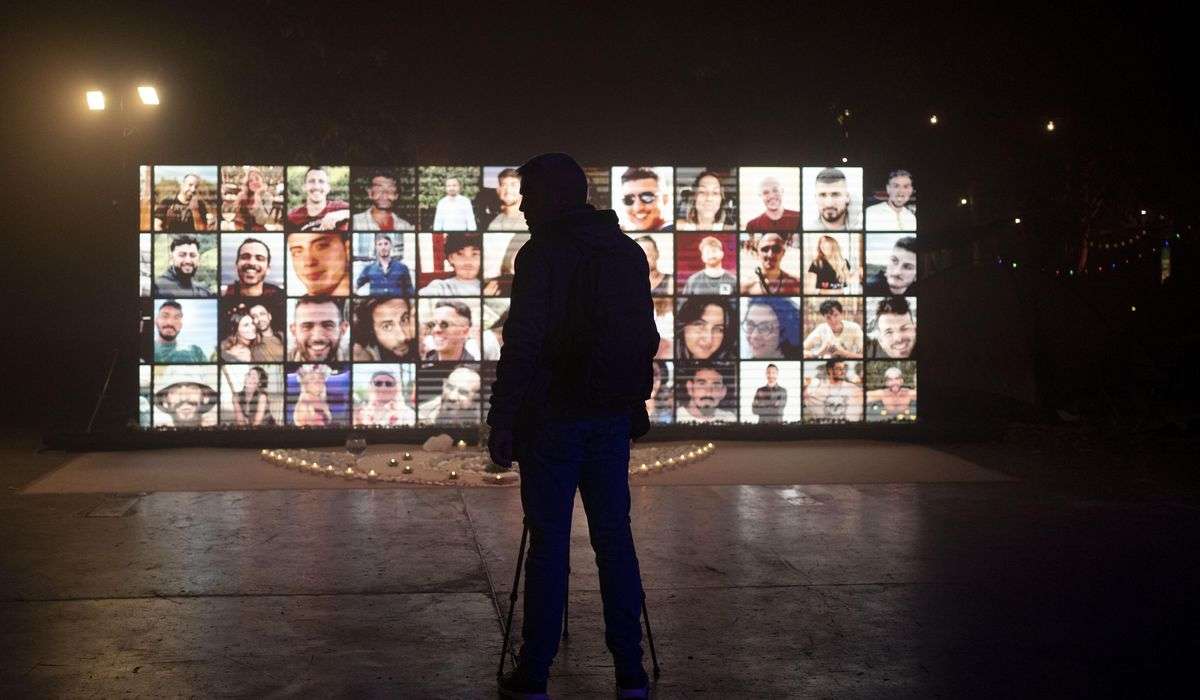Israelis process, mourn, remember as they ponder a post-Oct. 7 world

TEL AVIV, Israel — Call it a small spark of light in the wake of one of the darkest days in the country’s history.
On Oct. 7, Hamas militants carried out a rampage across southern Israel, resulting in the deaths of hundreds of civilians near the border with the Gaza Strip.
One of the worst massacres was at the Nova music festival in a forest near the community of Reim. With tents and a makeshift bar, festival-goers gathered in the sand to listen to music.
This week, the Tel Aviv Expo is honoring the memories of those slain at the festival.
“Thousands of radiant souls came together for a celebration of unconditional love and the spreading of light,” a poster at the entrance to the exhibit says. “In one moment the celebratory atmosphere was shattered. The Angel of Death swooped down.”
The Israeli offensive to avenge the massacre rages in Gaza with mounting fears of a regional escalation, but the exhibition gives Israelis a way to process the events of Oct. 7. Those attending say it is meant not to move on but to mourn and come to terms with a world turned upside down.
SEE ALSO: Houthis use opportunity to roil world economy; brazen fighters target shipping, oil
It’s all happening as victims are still being identified and hostages, including many who went to Reim to enjoy a concert, remain separated from their loved ones.
The display has brought together many relics to re-create the concert site, this time inside a large hall. Displays of the victims’ tents and shoes, the bar and burned cars provide moments for reflection and introspection.
Organizers have left the room dark with billowing artificial smoke. Visitors grapple with their senses as pulsating music mixes with the remake of the massacre site. Screens commemorate the dead and those taken hostage by Hamas terrorists. Some are still captives inside Gaza, their fate and future uncertain more than 75 days after the attack.
In the weeks after Oct. 7, the killing fields around Reim and the festival site were still full of the vehicles that people used to try to flee. Many were stuck in a nearby field; others were filled with bullet holes and burned by Hamas.
Israel, the U.S. and many other Western nations consider the Palestinian group to be a terrorist organization.
Armored bus stops where people ran for shelter were turned into death traps as militants chucked grenades into them.
Burying the cars, fixing the signs
This reporter saw many of these areas on Oct. 16, nine days after the massacre, while driving along the road and walking the fields where the vehicles were found. The festival site was still being cleaned and bodies identified.
Hundreds of vehicles have been towed to an area along a road leading to Netivot. Israeli police keep watch over the site. Israel will bury some of the vehicles because they hold human remains.
This is another manifestation of the national need to cope. The burial of vehicles, an unprecedented step, provides finality to the investigation into the massacre.
On roads bordering Gaza, some of the signs have been repaired. The road from the Erez crossing leading to Ashkelon, a thoroughfare that connects several border communities attacked on Oct. 7, has new signage along the roadway. The repaired signs sit next to roads damaged from tank treads, evidence of the battles that unfolded less than three months ago.
Although Hamas has targeted Ashkelon with thousands of missiles and drones, the city’s 40,000 residents have been told that school schedules will return to normal and emergency measures will be lifted.
As if to send a message to the city, Hamas sent another rocket barrage on Dec. 21.
Israeli commanders say Hamas is losing ground in its Gaza stronghold but still has rockets that can threaten cities in southern and central Israel.
In dozens of small communities along the Gaza border and the city of Sderot, evacuation orders remain and residents cannot return. The sounds of bombs and fighting can be heard, and smoke can be seen rising.
Israel has invested a budget in rehabilitating these communities, reinforcing their defenses and building safe rooms from rocket fire, but all of this will take time.
For now, tens of thousands of residents remain in limbo, living in hotels where the state has housed them temporarily.






